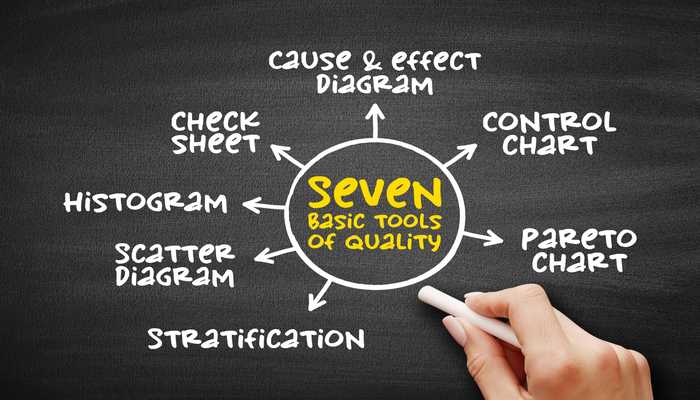Summary: Quality management has played a pivotal role in shaping the success and competitiveness of organizations across various industries. From the early days of craftsman guilds to the modern era of global standards, the evolution of quality management has been fascinating. Let’s explore the history of quality management, including developing quality management systems and the emergence of Total Quality Management (TQM). Let’s delve into the captivating story behind the pursuit of excellence and continuous improvement.
History of Quality Management Systems
Quality management encompasses organisations’ processes, strategies, and techniques to ensure that their products and services meet or exceed customer expectations. It involves a comprehensive approach to monitoring, controlling, and improving all aspects of quality within an organization. Throughout history, the concept of quality management has evolved in response to changing industrial landscapes and societal demands. From the craftsmanship of medieval guilds to the sophisticated quality systems of today, the pursuit of quality has been a constant force driving progress and innovation.
Ready to boost efficiency, compliance, and process control in your QMS?
Our EQMS enhances efficiency, compliance, and process control
The Origins: Tracing the History of Quality Management
The roots of quality management can be traced back to medieval Europe, where guilds played a crucial role in maintaining and improving product quality. Craftsmen formed guilds to ensure the mastery of their trade and protect the interests of their members. These guilds established standards, conducted inspections, and enforced quality control measures to safeguard the reputation and integrity of their crafts.
The Industrial Revolution: A Shift in Quality Practices
With the advent of the Industrial Revolution in the 18th century, traditional craftsmanship gave way to mass production and factory systems. This shift brought new challenges in maintaining quality as production volumes surged. During this period, quality control primarily relied on inspection-based methods, where products were checked for defects after production.
The Quality Movement: Early Approaches to Quality
In the early 20th century, statistical quality control emerged as a groundbreaking approach to managing quality. American physicist and statistician Dr. Walter Shewhart introduced statistical methods to analyze and control variation in manufacturing processes. Shewhart’s pioneering work laid the foundation for modern quality control practices.
Edwards Deming: Championing Quality Revolution
Another influential figure in the History of Quality Management Systems was Dr. W. Edwards Deming. After World War II, Deming, an American engineer and statistician, played a crucial role in Japan’s efforts to rebuild its economy. Deming emphasized the importance of statistical process control, continuous improvement, and a focus on customer satisfaction. His ideas revolutionized Japanese industries and propelled them to become global leaders in quality.
The Impact of Deming’s Ideas on Japan
Deming’s teachings and the dedication of Japanese organizations led to a quality revolution in Japan. Japanese companies embraced Deming’s principles, such as the Kaizen (continuous improvement) and PDCA (Plan-Do-Check-Act) cycle, to enhance their quality practices. The quality of Japanese goods rapidly improved, gaining international recognition and challenging established Western manufacturers.
Total Quality Management: A Paradigm Shift
Total Quality Management (TQM) emerged in the mid-20th century as a paradigm shift in quality management. TQM emphasizes the involvement of all employees in the pursuit of quality and the continuous improvement of processes. It aims to create a quality culture throughout an organization by integrating quality principles into every aspect of its operations.
Juran’s Contributions to TQM
Joseph M.Juran, a renowned quality management expert, significantly contributed to developing TQM. Juran emphasized the importance of managing quality as a strategic business process. He introduced the concept of the “quality trilogy,” which comprises quality planning, quality control, and quality improvement. Juran’s ideas helped organizations shift their focus from reactive quality control to proactive quality management.
Deming’s System of Profound Knowledge
Building upon his earlier work, Edwards Deming developed a holistic framework called the System of Profound Knowledge. This system encompasses four interrelated elements: appreciation for a system, knowledge of variation, theory of knowledge, and psychology. Deming believed that by understanding these elements, organizations could transform their management practices and achieve higher levels of quality and productivity.
TQM in Practice: The Toyota Production System
One of the most notable examples of successful TQM implementation is the Toyota Production System (TPS). TPS, also known as Lean Manufacturing, revolutionized the automotive industry with its focus on eliminating waste, continuous improvement, and respect for people. Toyota became synonymous with exceptional quality and efficiency by integrating TQM principles into every aspect of their operations.
Evolution of Quality Management: From Inspection to Integration
In the 20th century, the International Organization for Standardization (ISO) developed the ISO 9000 series of quality management standards. These standards provide a framework for organizations to establish and maintain effective quality management systems. By adhering to ISO 9000 standards, companies demonstrate their commitment to delivering quality products and services while meeting customer requirements.
The Malcolm Baldrige National Quality Award
The Malcolm Baldrige National Quality Award, established in 1987, recognizes organizations in the United States that exhibit excellence in quality management. Named after Malcolm Baldrige, the former Secretary of Commerce, this prestigious award encourages organizations to strive for continuous improvement and drive performance excellence across all areas of their operations.
Continual Improvement and Customer Satisfaction
Central to the evolution of quality management is the concept of continual improvement. Organizations are continually seeking ways to enhance their processes, products, and services to meet customers’ ever-changing needs and expectations. Customer satisfaction has become a key focus as organizations recognize the importance of delivering value and exceeding customer expectations in a competitive marketplace.
Quality Management Today: Advancing Excellence
Lean Manufacturing, derived from the Toyota Production System, has become a widely adopted approach to quality management. It emphasizes identifying and eliminating waste in processes to improve efficiency and reduce costs. Lean principles, such as Just-in-Time (JIT) production and continuous flow, enable organizations to optimize their operations and deliver products and services with minimal waste.
Six Sigma: A Data-Driven Approach to Quality
Six Sigma is a data-driven methodology that minimizes process variation and defects. Organizations can identify and address the root causes of quality issues by applying statistical analysis and rigorous problem-solving techniques. Six Sigma emphasizes the need for highly trained professionals, Black Belts and Green Belts, who lead improvement projects and drive quality initiatives.
Risk Management and Quality Assurance
In today’s complex business environment, managing risks and ensuring quality assurance have become critical aspects of effective quality management. Organizations employ strategies and methodologies to identify, assess, and mitigate risks that could impact product quality or customer satisfaction. By implementing robust risk management practices, organizations can proactively address potential issues and maintain high levels of quality.
FAQ | History of QMS
What is the history of Quality Management?
The history of Quality Management dates back to ancient civilizations, but its modern principles emerged during the Industrial Revolution in the 18th century. Notable milestones include the work of Walter Shewhart, W. Edwards Deming, and Joseph Juran in the mid-20th century, which laid the foundation for Total Quality Management (TQM) and other quality improvement approaches.
What is the significance of quality management in today's business environment?
Quality management is pivotal in today’s business environment as it enables organizations to deliver products and services that meet or exceed customer expectations. Through effective quality control and quality management, businesses can build customer loyalty, enhance brand reputation, and drive long-term success.
How does Total Quality Management (TQM) differ from traditional quality control approaches?
Unlike traditional quality control approaches focusing on inspection and defect detection, TQM emphasizes a proactive approach to quality management. TQM involves the participation of all employees, continuous improvement, and a holistic view of quality throughout the organization.
What role did Edwards Deming play in the evolution of quality management?
Edwards Deming played a pivotal role in the evolution of quality management. His ideas and teachings had a profound impact on both the Japanese and global industries. Here are some key contributions Deming made:
- Statistical Process Control (SPC)
- The 14 Points for Management
- Plan-Do-Check-Act (PDCA) Cycle
- System of Profound Knowledge
- Quality Philosophy in Japan
What is the importance of Quality Management?
Quality Management is crucial for businesses to enhance customer satisfaction, improve processes, reduce waste, and ultimately increase profitability. By adhering to quality management principles, businesses can build trust with customers, enhance brand reputation, and stay competitive in the market.
Image: Adobe Stock – Copyright: © pinkrabbit – stock.adobe.com





